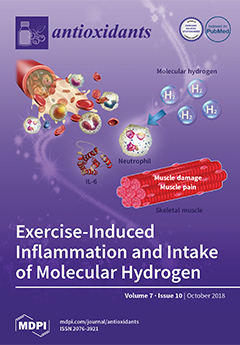Coffee is a beverage widely consumed in the world. The coffee species most commercialized worldwide are Arabica (
Coffea arabica) and Robusta (
Coffea canephora). Roasted coffee beans are the most used, but coffee leaves are also consumed as infusion in several
[...] Read more.
Coffee is a beverage widely consumed in the world. The coffee species most commercialized worldwide are Arabica (
Coffea arabica) and Robusta (
Coffea canephora). Roasted coffee beans are the most used, but coffee leaves are also consumed as infusion in several countries for traditional medicinal purposes. They contain several interesting phenolic antioxidant compounds mainly belonging to chlorogenic acids (CGAs). In the present work, a liquid chromatography-electrochemical detection (LC-EC) method was developed for the determination of three main chlorogenic acid isomers, namely 3-, 4-, and 5-caffeoylquinic acids (CQA), in coffee leaves aqueous extracts. Samples from eight coffee species, namely;
Coffea arabica,
Coffea canephora,
Coffea liberica,
Coffea humilis,
Coffea mannii,
Coffea charrieriana,
Coffea anthonyi, and
Coffea liberica var. liberica, were grown and collected in tropical greenhouses. Linearity of the calibration graphs was observed in the range from the limit of quantification to 1.0 × 10
−5 M, with R
2 equal to 99.9% in all cases. High sensitivity was achieved with a limit of detection of 1.0 × 10
−8 M for 3-CQA and 5-CQA (i.e., 3.5 µg/L) and 2.0 × 10
−8 M for 4-CQA (i.e., 7.1 µg/L). The chromatographic profile of the samples harvested for each
Coffea species was studied comparatively. Obtained raw data were pretreated for baseline variations and shifts in retention times between the chromatographic profiles. Principal Component Analysis (PCA) was applied to the pretreated data. According to the results, three clusters of
Coffea species were found. In the water sample extracts, 5-CQA appeared to be the major isomer, and some species contained a very low amount of CQAs. Fluctuations were observed depending on the
Coffea species and harvesting period. Significant differences between January and July were noticed regarding CQAs content. The species with the best CQAs/caffeine ratio was identified. The LC-EC data were validated by liquid chromatography-high resolution mass spectrometry (LC-HRMS).
Full article






